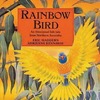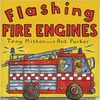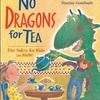learning resource, writes Marianne Sargent.

Fire and rescue is a very popular theme in the early years. The interesting equipment, colourful uniforms and large noisy engines excite the children and grab their interest. However, the fire itself is just as thrilling and it is worthwhile during such a topic to take time to closely examine the properties of this natural occurrence.
FLICKERING FLAMES
Do this activity with very small groups of children. Be sure to carry out a risk assessment before starting and have a bucket of water or sand close at hand for extinguishing a fire if need be.
Adult role
- Bring the children to a table and explain that you are going to light some candles.
- Take some time to talk about fire safety. Can the children explain why it is dangerous to play with matches? What might happen if they touch the candles once they are lit?
- Show the children the bucket of water or sand. Do they know why you have this close by? What could happen if a candle tips off the table?
- Light the tea lights and encourage the children to describe what the flames look like. Point out how the flames move and change colour. Can the children feel the heat from the flames? If you have used scented candles, can they describe the smell?
- Allow the children to blow the candles out. What happens to the flames? Can they describe what the smoke looks like? What can they smell now?
- Pick up the candles and pour off some of the melted wax. Can the children explain what has happened to the wax and why? Watch the wax solidify. Can the children explain why this has happened?
- Take the candles outside and relight them. Do the flames look different outside? Do they behave differently? Can the children explain why?
Learning opportunities
PSED: Shows understanding of the need for safety and considers and manages some risks.
CLL: Extends vocabulary, exploring the meaning and sounds of the new words.
UW: Talks about some of the things they have observed and looks closely at the similarities, differences and change.
SPARK SOME CREATIVITY
Fill the arts and crafts area with resources and materials that will inspire the children to create some fiery artwork.
Adult role
- Stick photographs of fires and flames in the arts and crafts area for inspiration.
- Project a video of some flickering flames on the interactive whiteboard.
- Provide a variety of resources that the children can use to create fiery effects.
- While the children are busy, talk to them about their experiences of fire. Do they have an open fire at home? Have they ever been to a bonfire? Can they tell you what it looked, felt, sounded and smelt like? Ask them what they are doing. Why have they chosen particular materials and what effects are they trying to create?
- Ask them if there is anything else you can provide that is not already available.
- Allow the children to venture outside to make larger-scale artworks on large rolls of paper or with playground chalks on the floor.
- Invite the children to comment on each other's artworks. What does the piece look like? What do the children think about the effects created? Can they think of any other ways to create the same effect?
Learning opportunities
PSED: Is confident to speak to others about own needs, wants and opinions.
CLL: Uses talk to organise, sequence and clarify thinking and ideas, as well as feelings.
EAD: Captures experiences and responses with a range of media and other materials.
FRIEND OR FOE
This activity aims to help children understand the various purposes of fire, as well as the difference between helpful and hazardous fires.
Adult role
- Begin by showing the children a series of photographs of helpful fires, including someone cooking on a gas stove, some people sitting around a campfire, a lit log burner, a barbecue and a child blowing out candles on a birthday cake.
- Encourage the children to talk about what is happening in each picture. Can they explain the purpose of the helpful fires? Do they know how each fire was created? Talk about how the invention of electricity has replaced the use of fire in many situations.
- Move on to show the children some hazardous fires including a house fire, factory blaze and bush fire.
- Explore the various possible causes of these hazardous fires. Refer the children back to the previous set of photos. Can they highlight any dangers posed by the useful fires that might lead to them getting out of control?
- Help the children to consider the properties of fire and why it is so dangerous. Highlight the dangers of smoke as well as the fire itself.
- Take a walk around the setting and ask the children to look out for smoke alarms and fire exits.
Do the children know what to do in the event of a hazardous fire at the setting? Run through the evacuation plan and practise it together.
- Talk about what to do in the event of a fire at home. Do the children know what number to phone and whom to ask for? Do their families have an escape plan?
Arrange a visit
Fire brigades all over the country provide educational experiences specifically tailored to various age ranges. Visit your local brigade website to find out whether they can visit you or you can visit them.
Learning opportunities
PSED: Can talk about the ways to keep safe.
UW: Talks about why things happen and how things work.
SONGS, RHYMES, GAMES
London's Burning
Find a video of this song on YouTube at www.youtube.com/watch?v= dRJBegR-SgM.
Explain the origins of this song. It is about the Great Fire of London, which started in a bakery in Pudding Lane in 1666.
Safety rhyme
Matches, lighters never touch
They can hurt you very much!
Ten Little Firefighters
Ten little firefighters sleeping in their beds,
'Ding' went the bell and down the pole they slid.
They raced to the fire and put out all the flames,
Then ten little fire fighters went back to bed again.
Online resources and games
- Visit firemansamonline.com/uk/index.asp and find a range of Fireman Sam games and activities for young children.
- The Cheshire, Hampshire and North Yorkshire Fire & Rescue Services provide some interesting educational games and resources on their websites: www.cheshirefire.gov.uk/kidzone; www.hantsfire.gov.uk/kidzone.htm; and www.northyorksfire.gov.uk/communitysafety/young-people/kidszone.
MORE IDEAS
- Compose fire poems.
- Build a campfire or have a barbecue.
- Use a large cardboard box to make a fire engine.
- Set up a role-play fire station.
- Take the children into a large space and move like flames.
- Provide sticks for the children to build pretend campfires.
- Provide hose pipes, wellies and waterproofs for children to 'put out fires' in the outdoor area.
- Create a hoses and ladders game (an alternative to snakes and ladders).
RESOURCES
Flickering flames: Buckets of water or sand, tea lights or candles, extra long safety matches.
Friend or foe: Photographs of different types of fire.
Spark some creativity: Photographs of fire and flame, large rolls of paper, pieces of black sugar paper and paint, cellophane, tissue paper, foil, ribbon, crepe paper, glitter, crayons and chalks in fiery colours - red, yellow, orange and blue. Find virtual fireplace videos in varying lengths on YouTube.
Books
Rainbow Bird by Eric Maddern and Adrienne Kennaway - Aboriginal folk tale about fire from Northern Australia.
No Dragons for Tea by Jean E Pendziwol and Martine Gourbault - rhyming picture book about fire safety.
Flashing Fire Engines by Tony Mitton and Ant Parker - illustrated information book with rhythmical rhyming text.
Working Wheels: Fire Engine by Annabel Savery - simple information book with good-quality photographs.
Firefighter (People Who Help Us) by Rebecca Hunter - information book about the typical day in the life of a real working firefighter.
Emergency! by Margaret Mayo and Alex Ayliffe - rhyming picture book featuring a range of emergency vehicles, including the fire engine.
A Day with the Animal Firefighters by Sharon Rentta - a moose wants to become a firefighter, but has to learn the ropes first.
Marianne Sargent is a writer specialising in early years education and a former foundation stage teacher and primary and early years lecturer









